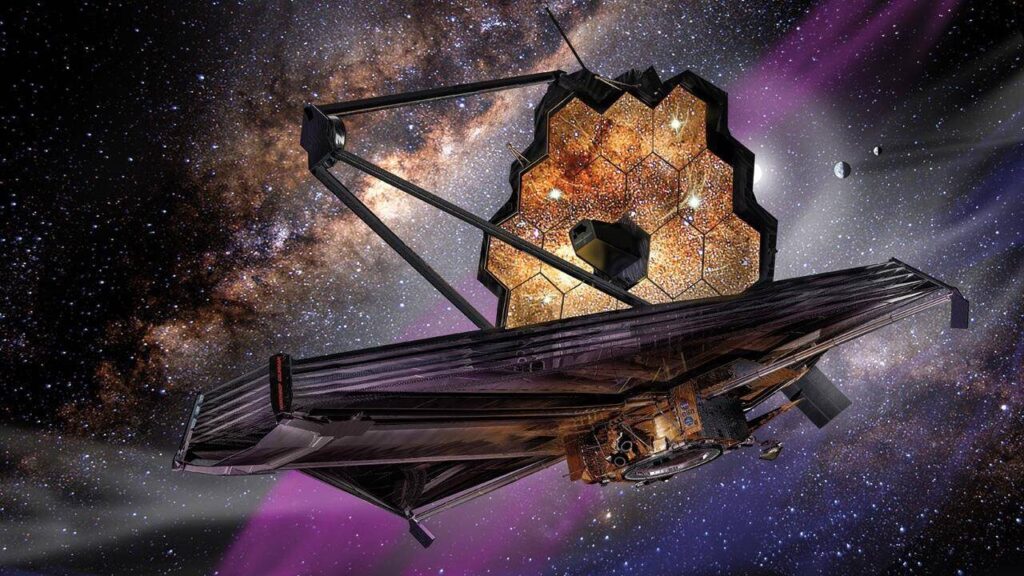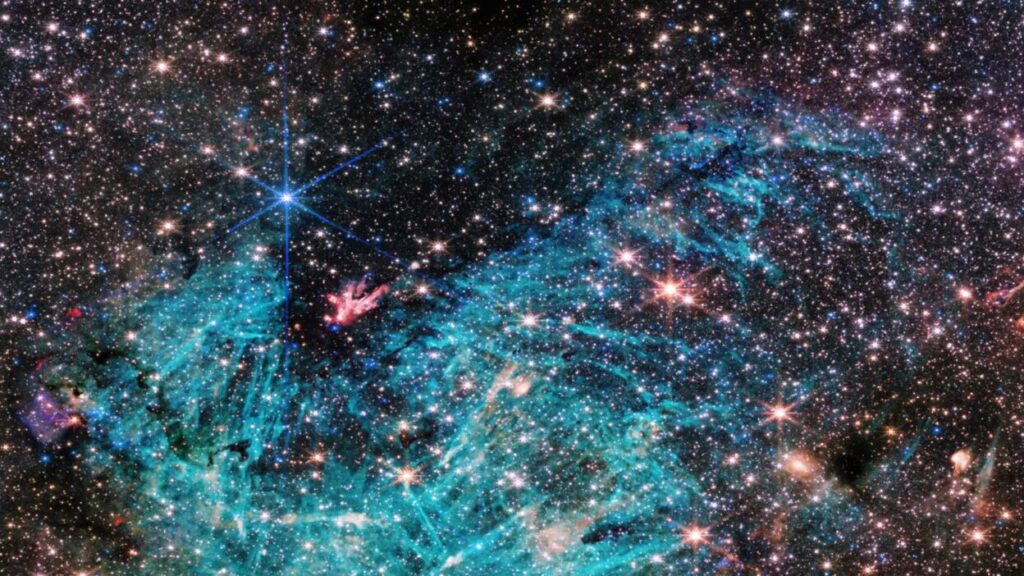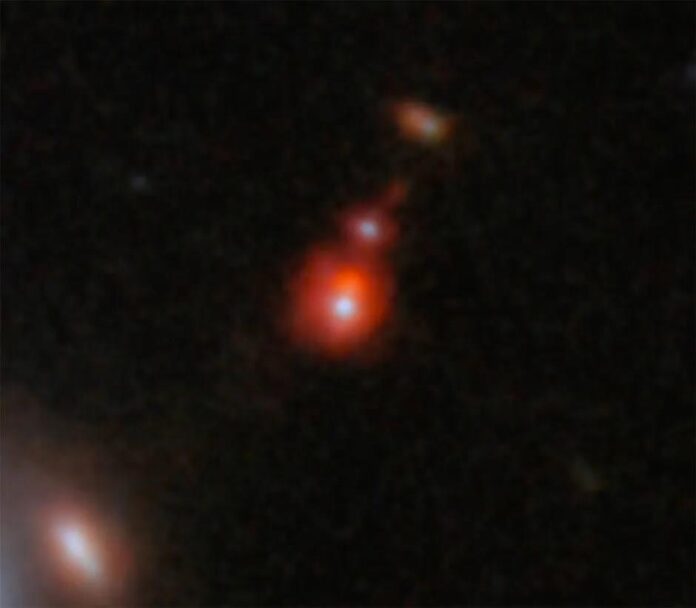The James Webb Space Telescope has made a groundbreaking observation, detecting the oldest known black hole merger. Researchers from Cambridge University identified the merger of two supermassive black holes, each around 50 million times the mass of our Sun, occurring just 740 million years after the Big Bang. This discovery sheds light on the rapid growth of black holes in the early universe.

Unveiling the Ancient Cosmos
Dr. Hannah Ubler, lead author of the study from the Cambridge Cavendish Laboratory and Kavli Institute for Cosmology, explained, “We found evidence of extremely dense gas moving at high speeds near the black holes, as well as hot, highly ionized gas illuminated by the energetic radiation typically produced during black hole accretion periods.”
The Webb Telescope’s latest observations revealed the ongoing merger of two galaxies, each harboring supermassive black holes, in a system named ZS7. This merger, occurring when the universe was just 740 million years old, showcases Webb’s unique observational capabilities, which Earth-based telescopes cannot match.

The Role of Mergers in Black Hole Growth
One of the black holes in the ZS7 system is confirmed to have a mass equivalent to 50 million Suns. The second black hole is believed to be of similar size, though its mass is harder to measure due to its location within a dense gas cloud. These findings suggest that even in the early universe, mergers played a crucial role in the rapid growth of black holes.
Dr. Ubler highlighted the significance of these observations, stating, “Along with other findings from Webb, the existence of active, massive black holes in the distant universe indicates that these giants have been influencing the evolution of galaxies from the very beginning.”

Gravitational Waves and Future Observatories
The merger of these two black holes generates gravitational waves—ripples in spacetime. Future observatories, such as the Laser Interferometer Space Antenna (LISA), recently approved by the European Space Agency, aim to detect these waves, providing further insights into such cosmic events.
This remarkable discovery was made possible through the Galaxy Assembly program using NIRSpec Integral Field Spectroscopy. The research aims to explore the relationship between large black holes and their host galaxies in the first billion years of the universe, focusing on the frequency of black hole mergers, their growth, and the production of gravitational waves.

MIT’s Insights into Primordial Black Holes
In a separate study, MIT astronomers utilized the James Webb Space Telescope to examine distant quasars, gaining new insights into the origins of black holes. Their observations, spanning over 13 billion years, revealed that the black holes powering these quasars are significantly larger than their host galaxies, raising questions about their rapid growth.
Minghao Yue from MIT’s Kavli Institute suggests that these black holes might have originated from “seed black holes,” which rapidly consumed cosmic material to grow into supermassive black holes. These seeds could have formed from supernovae or the direct collapse of gas clouds.
MIT’s findings challenge previous assumptions by indicating that black holes may have gained mass before their host galaxies, providing new perspectives on the early evolution of the cosmos.
These discoveries underscore the transformative power of the James Webb Space Telescope in enhancing our understanding of the universe’s earliest epochs and the enigmatic processes governing black hole growth.

